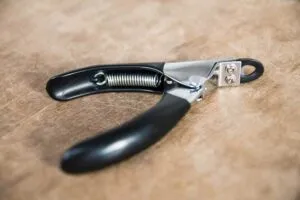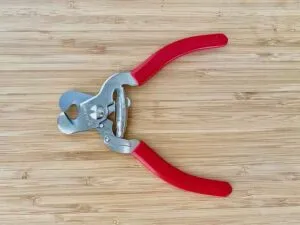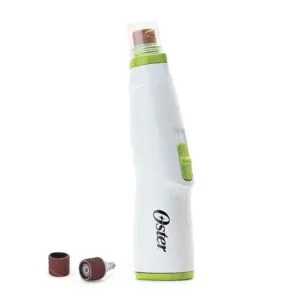Introduction:
Trimming your dog’s nails is an important aspect of grooming as it promotes your dog’s overall health and prevents potential health problems. Many pet owners find this task scary, but with the right approach and a little patience, it can be a stress-free activity for you and your furry friend. This comprehensive guide will walk you through the process of cutting your dog’s nails, ensuring a positive experience for everyone involved.
Gather the Necessary Supplies
Before you begin the nail-trimming process, make sure you have all the required supplies on hand:
1. Dog Nail Clippers: Choose the right type of nail clippers for your dog – guillotine, scissor, or grinder, based on your preference and your dog’s comfort.
2. Styptic Powder: In case of accidental bleeding, having styptic powder can help stop the bleeding quickly.
3. Treats or Rewards: Positive reinforcement is crucial. Treats or rewards will help keep your dog calm and associate nail trimming with a positive experience.
Familiarize Your Dog with the Tools
Before you start trimming, introduce your dog to clippers or a grinder. Ask your child to smell and explore remedies to alleviate fear and anxiety. This step helps create a positive association with the equipment.
Choose the Right Time and Place
When cutting your nails, choose a quiet and well-lit area. Try to minimize distractions and make sure you and your dog are comfortable. Choosing an appropriate time, such as after a walk or playtime, when your dog is relaxed, will also help make things go smoothly.
Inspect the Nails
Examine your dog’s nails to identify sensitive areas with a concentration of blood vessels and nerves. To prevent pain and bleeding, cut only the tip of the nail and do not cut it too quickly. Light colored nails will make this process easier as the pink shade will be more visible.
Gradual Introduction to Nail Trimming
If your dog isn’t used to having their nails trimmed, start slowly. Start by cutting one or two nails at a time, and gradually increase the number as your dog gets used to it. Be patient and give positive reinforcement in the form of treats and praise after each successful trim.
Nail Trimming Techniques
a. Guillotine Clippers:

Perfect for dogs who feel anxious during grooming, this nail clipper offers a solution despite its creepy name. This mechanism involves threading your dog’s nail through a designated hole and gently cutting off the excess length with a blade. A notable drawback of this method is that there is no safety feature, making it difficult to predict when the limit will be reached.
Despite this drawback, these clippers are superior to scissor alternatives in certain aspects. This is especially advantageous for dogs with brittle nails, as it reduces the risk of nail entrapment compared to scissors.
b. Scissor Clippers:

These clippers have earned the reputation of being the most popular choice in the world, and their popularity is well deserved. Known for their simple and easy-to-use design, these clippers are exceptionally easy to use. A notable feature is the safety lock. This is a valuable addition to prevent accidental clipping, ensuring your dog’s safety and health during the trimming process. Additionally, many of these clippers have movable blades, making them versatile for different dog breed sizes.
These nail clippers are primarily designed for working with thick or dense nails, and utilize the power of your hands to cut efficiently. It’s important to note that dogs with brittle nails are more likely to get their nails pinched, which can have negative health effects. So, if you are looking for the best nail clippers for medium or large dogs, a scissor style nail clipper model is the best option for you. Its design and functionality prioritize both ease of use and your furry companion’s health, making it ideal for this task.
c. Grinders:

Nail sharpeners have recently become popular on the market and have clear advantages over traditional methods. One notable benefit is the peace of mind that you won’t accidentally cut your dog’s nails too deeply. The sandpaper grinder used in this device helps to make the tips of the nails more rounded compared to the sharp results obtained by trimming with a blade.
Although effective, it is important to note that using a nail grinder will take more time to reach your desired nail length. Additionally, the noise made by squeaking can be frightening to some dogs. This is a great option if your dog notices noises or crunching sounds.
Nail sharpening is a practical solution, but it is more expensive than traditional scissor clippers. Therefore, we recommend considering them, especially in households with multiple dogs, as they are a valuable option for your pet’s nail health and overall health.
Handling Accidents
In the event of accidental bleeding, remain calm. Apply styptic powder to the bleeding area and maintain gentle pressure until the bleeding stops. Comfort your dog and offer treats to ease any stress.
Conclusion:
Regular nail trimming is an important aspect of your dog’s grooming routine. By following these steps and maintaining a positive attitude, you can ensure that nail trimming is a stress-free and bonding experience for you and your furry companion. Remember to take it slow, use positive reinforcement, and consult your veterinarian if problems arise. Have fun trimming!

I am a dedicated writer, specializes in crafting captivating content centered around Dogs. With a keen eye for detail and a passion for dogs, I delivers engaging narratives that celebrate the bond between humans and their Doggos.



